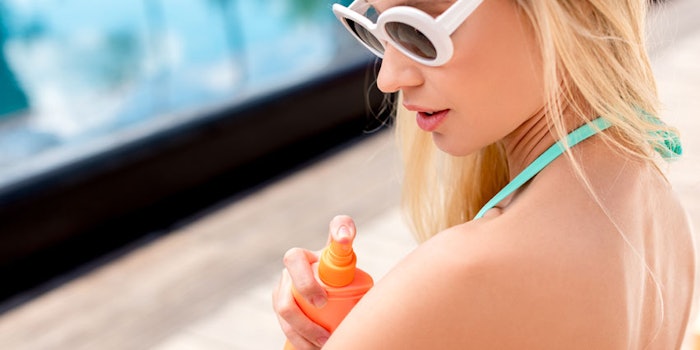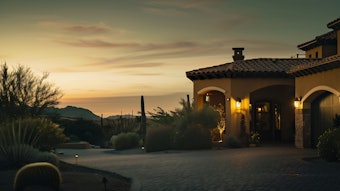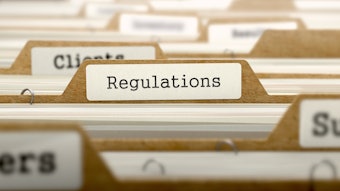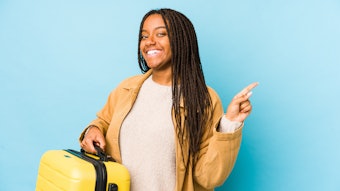
Michael Werner is a Washington, D.C.-based public policy and regulatory attorney, and a co-leader of the Holland & Knight law firm's Healthcare and Life Sciences Team. He serves as the policy adviser to the PASS coalition; i.e., the Public Access to SunScreens (PASS) coalition, which comprises public health organizations, physician groups, sunscreen manufacturers and concerned citizens.
The coalition’s goal is to “help prevent skin cancer and improve public health by ensuring Americans have access to safe and effective sunscreens and evidence-based education on sun-safe practices.” As such, when the Environmental Working Group (EWG) launched its latest attack claiming “two-thirds of sunscreen products still offer inferior sun protection or contain worrisome ingredients, like oxybenzone," Werner responded—rightfully concerned this could mislead consumers to bypass sunscreen use altogether, which could put them at risk.
 “We remain in the midst of a public health crisis around skin cancer. The statistics are that more than 192,000 Americans will be diagnosed with melanoma this year, which is a 7.7% increase over 2018. About 7,200 Americans will die from this disease. So, we still have a situation where we’ve got rising rates of skin cancer and melanoma."
“We remain in the midst of a public health crisis around skin cancer. The statistics are that more than 192,000 Americans will be diagnosed with melanoma this year, which is a 7.7% increase over 2018. About 7,200 Americans will die from this disease. So, we still have a situation where we’ve got rising rates of skin cancer and melanoma."He added that everyone, from the public health community to the U.S. Food and Drug Administration (FDA), agrees that sunscreen, when used with other sun-safe practices, is a critical part of protecting [against] the risks of these diseases, including skin cancer. “It is critical that Americans understand that they should be diligent about applying and reapplying sunscreens; and preferably sunscreens that are broad-spectrum and protect them from UVA and UVB rays. We also know that when you get a sunburn, even as a child, it affects the risk of developing skin cancer and melanoma later in life.”
This has been the status of public health for some time. Werner added, “We also are still in a situation where there has been no new sunscreen on the market in the U.S.” No doubt sunscreen formulators are been painfully aware of this fact, too.
“It is critical that Americans understand that they should be diligent about applying and reapplying sunscreens; and preferably sunscreens that are broad-spectrum and protect them from UVA and UVB rays."
So, what has changed? And why has the EWG report stirred such concern?
“The U.S. FDA analyzed some of the [sunscreens] on the market and concluded that more testing is needed,” said Werner. “I think it’s fair to say the public health community is concerned that people will interpret this to mean that they shouldn’t be wearing sunscreens; even though the FDA also reiterated ‘we want to make sure people wear sunscreen.’”
He noted the FDA also issued a proposed regulation suggesting more data would be necessary in order to make the determination that most sunscreen ingredients currently used would be considered generally recognized as safe and effective (GRASE).
“There is sort of a cumulative effect of all this muddying the message and [running] counter to the idea that sunscreen is a critical tool in the fight against melanoma and skin cancer…. [By issuing the proposal for more] data around some of the existing and currently marketed sunscreens, [the FDA is] not saying that 40% of sunscreens (or whatever) do not meet its rules for safety and effectiveness—not to the extent that the Environmental Working Group is suggesting; I think that’s a leap from what the FDA has said.”
He applauded the EWG for underlining the importance of wearing sunscreen and making it part of a regimen that includes wearing hats, etc. But he added, “I think that suggesting many of the sunscreens on the market are somehow unsafe not only isn’t true, and is not what the FDA said, but is where you start to confuse people. And of course, [this is happening] in the middle of this public health crisis when public health groups are trying to encourage people to wear more sunscreen.”
So what data does the FDA want or need? “[The FDA is] concerned about absorption for some sunscreen ingredients and therefore, wants to see more carcinogenicity and other kinds of data in order to assure what happens when these chemicals are absorbed.” This concern, as regular readers know, arose from a recent clinical study identifying levels of sunscreens in users’ bloodstreams; a study that one of our scientific advisers considers to be of questionable design.
Werner continued, “It becomes complicated when you’re talking about a product like oxybenzone, which is made by numerous companies and has since become a generic. Who is supposed to do these tests? … Another challenge, which we saw with the time-and-extent-application (TEA) sunscreens, too, is the FDA has never suggested this before. It never suggested there might be an issue with absorption rates, and never said it would need additional data, particularly for products that have been on the market for a long time. The FDA essentially fixed the approval process and assumed all would be good to go.
"Now that FDA has suggested [it wants more data new tests], the question becomes who’s going to do it? And how will it be done? There’s not really an established protocol for doing it."
“So for your readers, one of the challenges here, is the lack of clarity around the regulatory pathway. And by that I mean we created a statute that created a pathway, but now that FDA has suggested [it wants more data new tests], the question becomes who’s going to do it? And how will it be done? There’s not really an established protocol for doing it. And there are questions surrounding absorption standards, as far as what they should be. I think all of this makes things a opaque in terms of how a manufacturer should proceed.”
The PASS Coalition, in the context of the FDA proposal, plans to talk about the public health situation as well as the need for clarity around the FDA’s messaging about the importance of using sunscreens. “And if FDA determines a product is not GRASE, then what happens?” he said. “Even if the FDA is looking for additional data, the message to Americans should not be ‘this stuff doesn’t work and isn’t safe’—oh, and by the way, the stuff that is used all over the world that is next-generation technology, those are the exact products that are in the TEA process the FDA is still sitting on.
“So the [current] situation is: we don’t have new sunscreens, and for the existing ones, which have been used safely for decades, are now being required by the FDA to provide more data. This is really at odds with the public/private effort the Surgeon General called for several years ago to attack skin cancer. Countries that have made a concerted and coordinated effort have been able to move the needle. This is why the public health community is concerned.”









